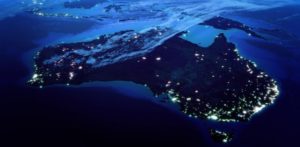
Australia is no emerging space nation. In fact, its history in space goes all the way back to the 1950s and it has quietly worked to make achievements in the industry that are both consistent and significant. However, when the International Astronautical Congress was held in Adelaide last year, Australia decided to advance it’s ambitions and is now looking at a new chapter in the country’s space history as it works to establish its own space agency. SpaceWatch Global’s Editor-in-Chief Helen Jameson looks at what is happening in Australia.
In late September 2017, the Australian city of Adelaide hosted the International Astronautical Congress (IAC). This is a prestigious event that brings together the great and the good of the space industry from all over the world to look at the direction in which it is heading and to focus on the innovation that is driving the sector forward. This year, it was a very special event for Australia; not only because it played host, but because the country was able to demonstrate to the world what a dynamic, exciting, and vibrant space industry exists across the country.
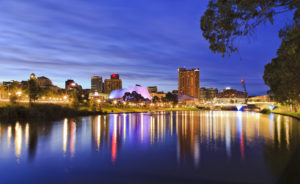
More importantly, it proclaimed that Australia has arrived as a space nation. Australia is to establish its own space agency. But Australia is no stranger to space. Let’s go back to 1967; the year that Australia became only the fourth country in the entire world to launch a satellite. Space ambition has always been deeply rooted in the Australian soil, but the time is now right for the country to pursue it against a backdrop of a new era in the global space industry.
“For some sectors of the public, it might seem like this increased interest in space has come from nowhere – but it’s built on the foundations of Australia’s early successes in space,” says Dr. Alice Gorman, Co-Deputy Chair, Satellite Industry Association of Australia (SIAA). “From the 1950s to the 1970s, Australia was a major contributor to global space development. We were developing our own home-grown scientific rockets, collaborating with the UK, US and Europe in rocket launch and spacecraft tracking, and supporting human spaceflight missions, such as the Apollo lunar landings. The problem has been how to translate this track record into a sustained and consistent government approach.”
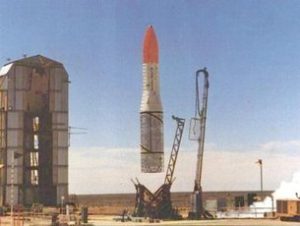
Gorman describes the IAC as the catalyst that brought Australia’s diverse space communities together, and also a mark that the international community was more than ready to support Australia in its space ambitions.
Australia has been an active participant in global space activities since the beginning, as Naomi Mathers, Co-Deputy Chair, SIAA explains: “Most of this activity has been in support of the major space agencies through the provision of ground station support, the development of applications and services from space-derived data, and the development of policy. These activities may not have attracted a lot of attention but it developed strong capability, good infrastructure, good relationships and a healthy research pipeline in Australia.”
We are seeing a dramatic change in the space sector on a global level. This is manifesting itself through a distinct shift from the large, classical GEO satellites that once formed the staple of the space industry. The sector is re-defining itself and its relevance through new and innovative launcher development and also through the exponential rise of the small satellite. Space is gradually being democratised and small satellites and their route to space is at the heart of this transformation. Highly capable smallsats are cheaper to build and launch, and this has created a slew of entrepreneurial satellite companies that are pledging to connect our planet as never before in LEO and MEO. This is creating huge excitement across the world, because it is opening up the space domain and Australia wants a piece of the action.
Mathers continues: “I think the increased activity in Australia reflects the shift in the global space industry toward more commercial activities, and an alignment with our strengths. This has led to stronger government support and increased private investment. You could describe Australia as an overnight success 60 years in the making.”
Australia is following hot on the heels of neighbouring New Zealand that established its space agency in 2016. There are many exciting developments taking place here as well, including the New Zealand launch site of U.S. firm Rocket Lab which has recently completed a successful launch – another step on the road to providing a very promising asset to the small satellite industry.
So, this ‘Down Under’ effect is taking place against a NewSpace landscape and Australia is looking to drive innovation and to push into the global space market to get the very best out of its impressive indigenous talent which in the past has often had to go elsewhere in pursuit of a dream career in space. However, this is dramatically changing, as the Space Industry Association of Australia (SIAA) will testify. With a database of 420 active space companies, this is proof positive of the work that is going into the space sector across the country.
“Our industry has a bright future and the SIAA will continue to help to drive it”, says Michael Davis, Chair of SIAA. “For 25 years we have been the peak space industry advocacy body in Australia. In that time we have seen many ups and downs in Australian space policy and changes in the industry in Australia, including the recent explosion in NewSpace start-ups.”
Though the establishment of the space agency has been announced, details so far are in short supply, but the challenge for the time being is to look at strategy. The government and its partners are looking to identify where gaps exist in current capability both in the downstream and upstream. It is looking at international cooperation as well and the risks and opportunities that the space industry brings with it. Then it has to identify the correct institutional arrangements that will best play out this strategy.
The current legislation (the Space Activities Act of 1998) is being overhauled to reflect the way in which the space industry has evolved. Alice Gorman explains: “Supporting these industries was the impetus for the review of Australia’s Space Activities Act 1998, which should be concluded this year. We also have a Satellite Utilisation Policy, which has not really played a big role due to its ambiguous status. Many felt it was more of a blueprint of what Australia would not do in space – it was a cautious document. One of the new space agency’s tasks will undoubtedly be to review existing policies, and develop new ones.”
The SIAA is working very closely with the government on new legislation. Davis continues: “By maintaining our independence and by confining our charter to the space sector alone we have accumulated considerable expertise in space policy issues and I believe we have established our reputation as an authoritative and influential voice. We are always consulted on these matters.”
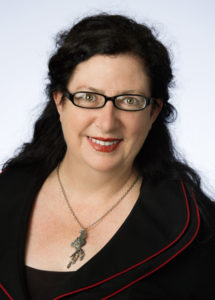
According to an SIAA whitepaper published in March 2017, ‘Advancing Australia in Space’, Australia contributed 0.8% of the global space economy and annual revenues of $3-4 billion. The Australian space workforce numbers between 9,500 and 11,500 people. The SIAA sees huge potential for this to double in just five years under the guidance of an Australian Space Agency.
Extensive Strengths
Australia’s extensive history in the space industry has helped the country to become a leader in several areas. Australia’s location alone offers a natural advantage for the establishment of ground stations, radio telescopes, space debris tracking, and launch facilities. It is also home to a mature satellite communications industry with leading players in the region such as Optus. Australia is a leader in the development of products and services from space-derived data and is also a pioneer in hyperspectral imaging and laser ranging. With a strong research sector, Australia excels in astronomy, adaptive optics, space physics, plasma propulsion, hypersonics, quantum cryptography, and astrobiology.
Looking After Space Talent
Australia is home to an immense amount of space talent and, with the establishment of the space agency, it will be able to retain and nurture this critical asset. Ray Stott, Founder of SpaceRayStott, a consultancy that offers freelance consulting, recruitment, training, and talks throughout the space industry, has strategically decided to locate his business in Australia as he envisions huge promise in the region.
“There is so much going on at the small satellite manufacturing level and a lot of understanding of how to kick-start the industry coupled with a great deal of government participation” explains Stott. “The key thing is that they are doing it very strategically.”
Stott mentions the myriad of start-ups that have emerged in Australia, especially in the Adelaide area, which is expected to become a space industry hub. “There are currently 50 start-ups in Adelaide that are dealing in space. The advantage of Adelaide for the growth of NewSpace is supported very well by the universities around Adelaide, Perth and Melbourne where there is a space programme as well and UNSW [University of New South Wales] in Sydney too.”
The start-up culture in the Australian space industry is infectious and there are names such as Fleet, Myriota, Moody Space Centre, and Gilmour Space Technologies that we can expect to hear much from in the future. This focus on launch and commercial small satellites is really creating a buzz – and it is having a very positive effect on the next generation of space engineers and scientists.
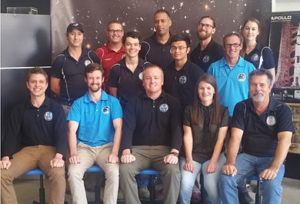
“Kids in Australia love rockets and dream of being astronauts as much as kids anywhere in the world – but now they may have more of a chance of working in the space sector without leaving the country,” says Alice Gorman. “My impression from talking about space to diverse audiences, such as students in primary, secondary and tertiary education, community groups and scientific conferences, is that there is a huge appetite for space. People are fascinated by the technology, the science, and the future. Space grabs the imagination. When the Space Agency was announced last year, I was contacted by numerous people asking how they could get a job in it. Now there is something to aspire to, people are coming out of the woodwork eager to contribute to Australia’s space renaissance.”
Indeed, before the IAC was held in September last year, there was a public campaign calling for the Australian Government to establish a national space agency – proof positive that the population is behind and engaged with space.
Next Steps
With the ball well and truly rolling towards the new space agency, there is still much groundwork to be done. The government must now evaluate what type of agency will best serve Australia’s future needs. In March 2018, the Expert Review Group will report back on its findings. “That’s the beginning of the process of establishing the agency,” says Alice Gorman. “Realistically, it might not be operational before 2019, although it would be nice if Australia were in a position to participate in the Heads of Space Agency forum at the IAC in Bremen, at the end of September 2018.”
The country has a very strong foundation upon which to build its space future. This is strengthened further through its extensive collaboration with other nations and institutions. The Australian Government has formal treaties with the U.S. space agency NASA, the European Space Agency (ESA), European Union (EU), Japanese Aerospace Exploration Agency (JAXA), the German Space Agency (DLR), and many more. Australia is also represented in international space forums such as the Committee on the Peaceful Uses of Outer Space (COPUOS), Asia-Pacific Regional Space Agency Forum (APRSAF), International Telecommunications Union (ITU), Committee on Earth Observation Satellites (CEOS), Group on Earth Observations (GEO), International Astronautical Federation (IAF), and the International Astronomical Union (IAU), to name just a few.
With a vibrant and fast growing NewSpace industry as well as a heritage that extends back as far as the space age has been in existence, Australia has much to look forward to in space and it will be exciting to see how its very own space agency evolves.
Helen Jameson is Editor-in-Chief of SpaceWatch.Global.


